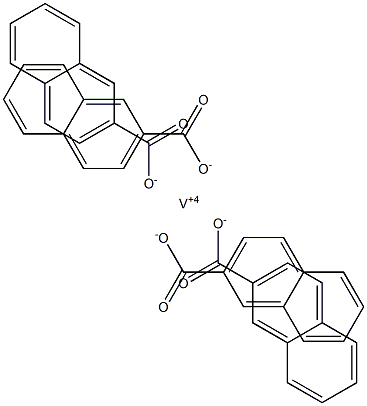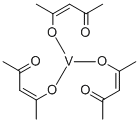Vanadium , 99.9%metalsbasis,100-200mesh , 7440-62-2
CAS NO.:7440-62-2
Empirical Formula: V
Molecular Weight: 50.94
MDL number: MFCD00011453
EINECS: 231-171-1
| Pack Size | Price | Stock | Quantity |
| 1g | RMB28.80 | In Stock |
|
| 5G | RMB84.80 | In Stock |
|
| 25G | RMB284.00 | In Stock |
|
| 100G | RMB966.40 | In Stock |
|
| others | Enquire |
PRODUCT Properties
| Melting point: | 1890 °C(lit.) |
| Boiling point: | 3380 °C(lit.) |
| Density | 6.11 g/mL at 25 °C(lit.) |
| bulk density | 4000kg/m3 |
| vapor pressure | 8 mm Hg ( 20 °C) |
| storage temp. | no restrictions. |
| solubility | H2O: soluble |
| form | turnings |
| color | Silver-gray |
| Specific Gravity | 6.11 |
| PH | 0.5 (20°C in H2O) |
| Flame Color | Yellowish green |
| Resistivity | 24.8-26.0 μΩ-cm, 20°C |
| Water Solubility | insoluble H2O; reacts with hot H2SO4, HF, HNO3, aqua regia [MER06] |
| Merck | 13,9984 |
| Exposure limits | OSHA: Ceiling 0.5 mg/m3; Ceiling 0.1 mg/m3 NIOSH: TWA 1 mg/m3; STEL 3 mg/m3; Ceiling 0.05 mg/m3 |
| Stability: | Stable. Incompatible with strong acids, strong oxidizing agents. |
| InChIKey | LEONUFNNVUYDNQ-UHFFFAOYSA-N |
| CAS DataBase Reference | 7440-62-2(CAS DataBase Reference) |
| EPA Substance Registry System | Vanadium (7440-62-2) |
Description and Uses
Vanadium was discovered in 1830 in Mexico by Andreas Manuel del Rio. It is present at 0.01% in earth’s crust and found in about 65 different minerals. Vanadium is released naturally into the air through the formation of continental dust, marine aerosols, and volcanic emissions. The natural release of vanadium into water and soils occurs primarily as a result of weathering of rocks and soil erosion. Anthropogenic sources include the combustion of fossil fuels, particularly residual fuel oils, which constitute the single largest overall release of vanadium into the atmosphere. Deposition of atmospheric vanadium is also an important source both near and far from industrial plants burning residual fuel oils rich in vanadium. Other anthropogenic sources include leachates from mining tailings, vanadium-enriched slag heaps, municipal sewage sludge, and certain fertilizers. Natural releases to water and soil are far greater overall than anthropogenic releases to the atmosphere.
Vanadium is used as an alloying addition to steel, iron, titanium, copper, and aluminum, with the primary use in the steel industry. Vanadium is also used as a target material for X-rays, as a catalyst for the production of synthetic rubbers, plastics, and chemicals, and in ceramics. Vanadium is an element of pharmacological and nutritional significance; for example, it has increasing therapeutic use in diabetes, and is emerging as a potent anticarcinogenic agent.
Safety
| Symbol(GHS) |   GHS02,GHS07 |
| Signal word | Danger |
| Hazard statements | H228-H315-H319-H335 |
| Precautionary statements | P210-P261-P280-P305+P351+P338-P405-P501a |
| Hazard Codes | Xi,T+,N,Xn |
| Risk Statements | 36/38-36/37/38-34-26-22-50-20 |
| Safety Statements | 26-36-45-7-36/37/39-28-61 |
| RIDADR | UN 3289 6.1/PG 2 |
| WGK Germany | 3 |
| RTECS | YW1355000 |
| F | 10 |
| TSCA | Yes |
| HS Code | 8112 92 91 |
| HazardClass | 4.1 |
| PackingGroup | II |
| Hazardous Substances Data | 7440-62-2(Hazardous Substances Data) |
| Toxicity | LD50 orally in Rabbit: > 2000 mg/kg |






